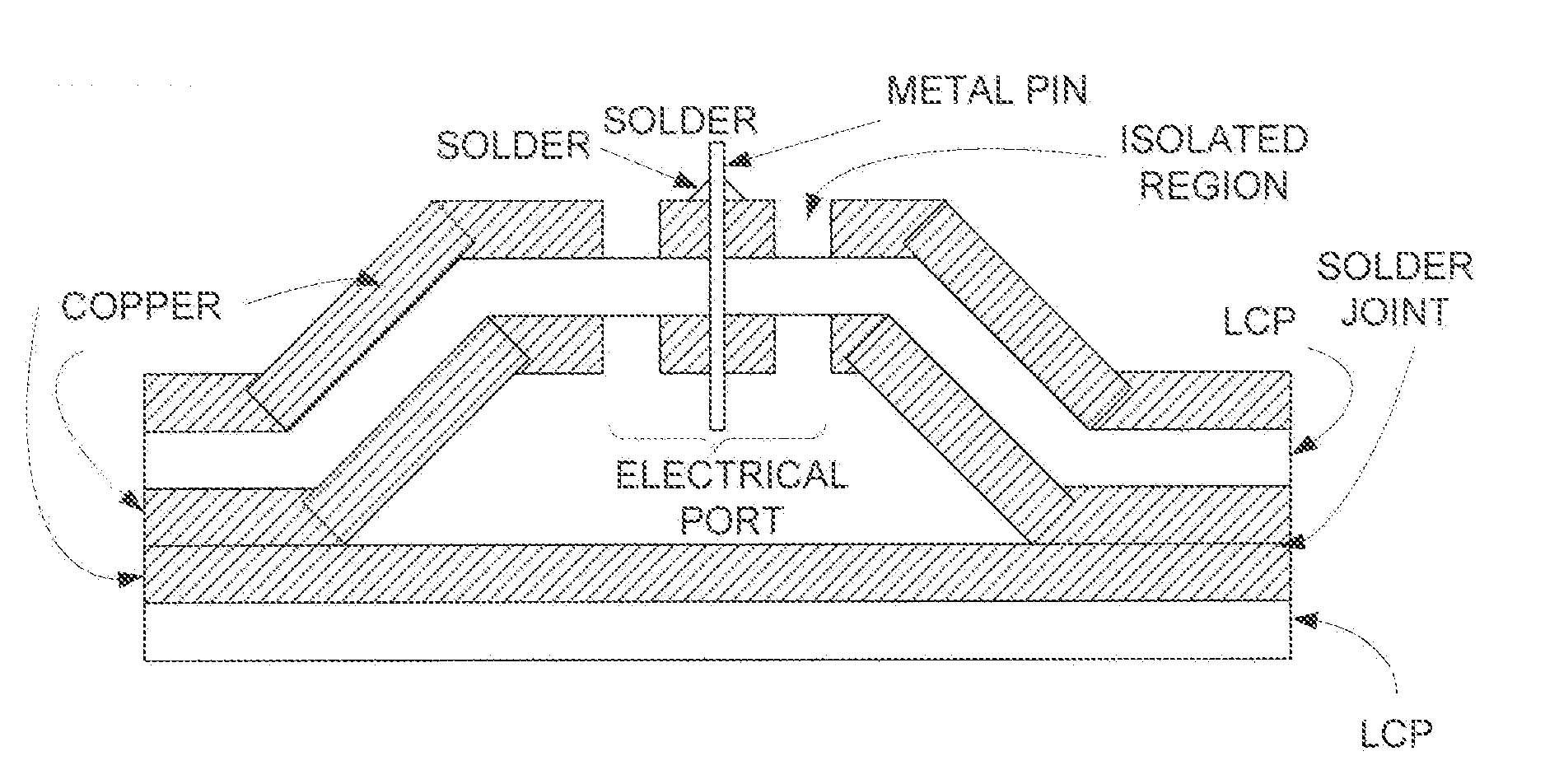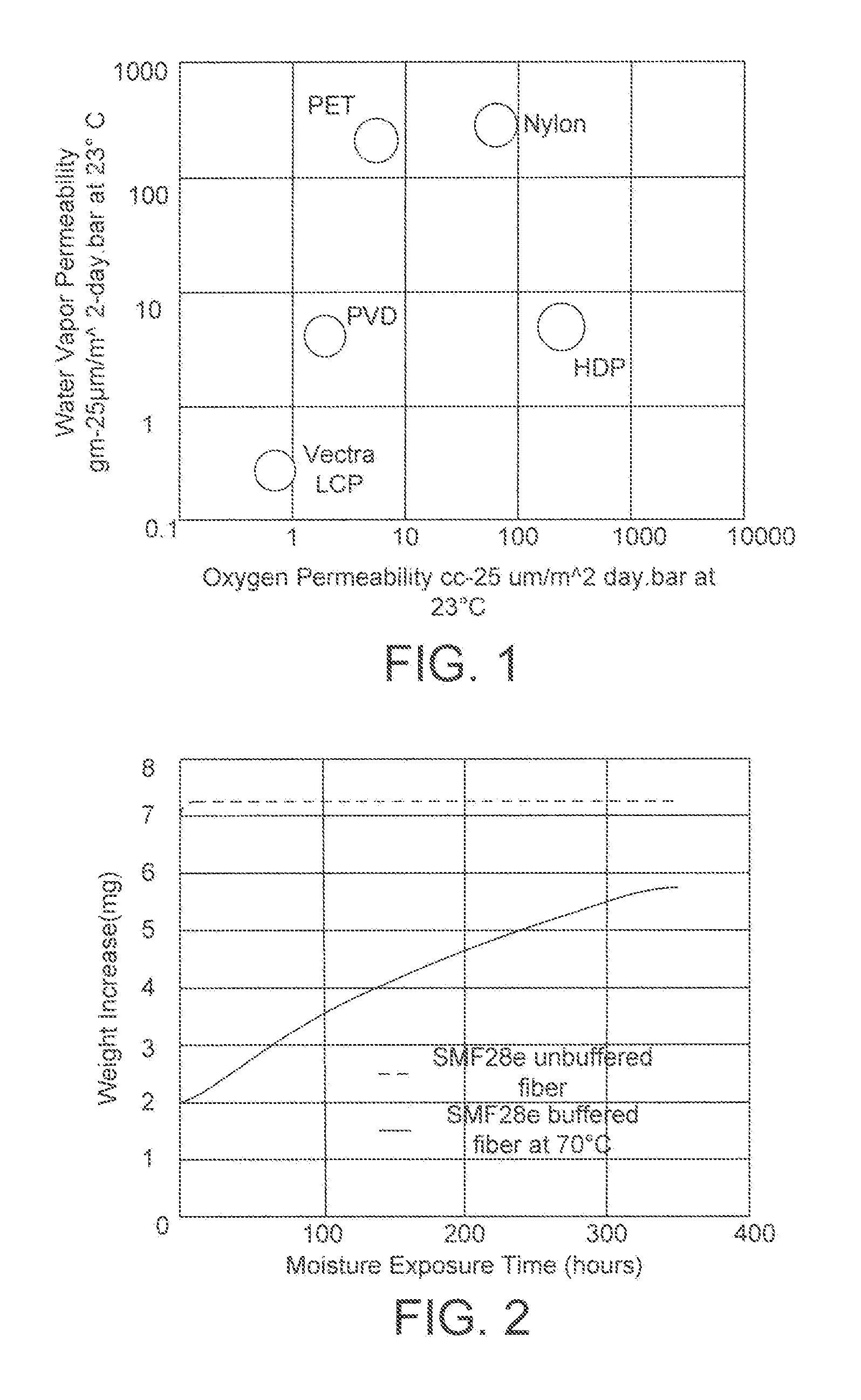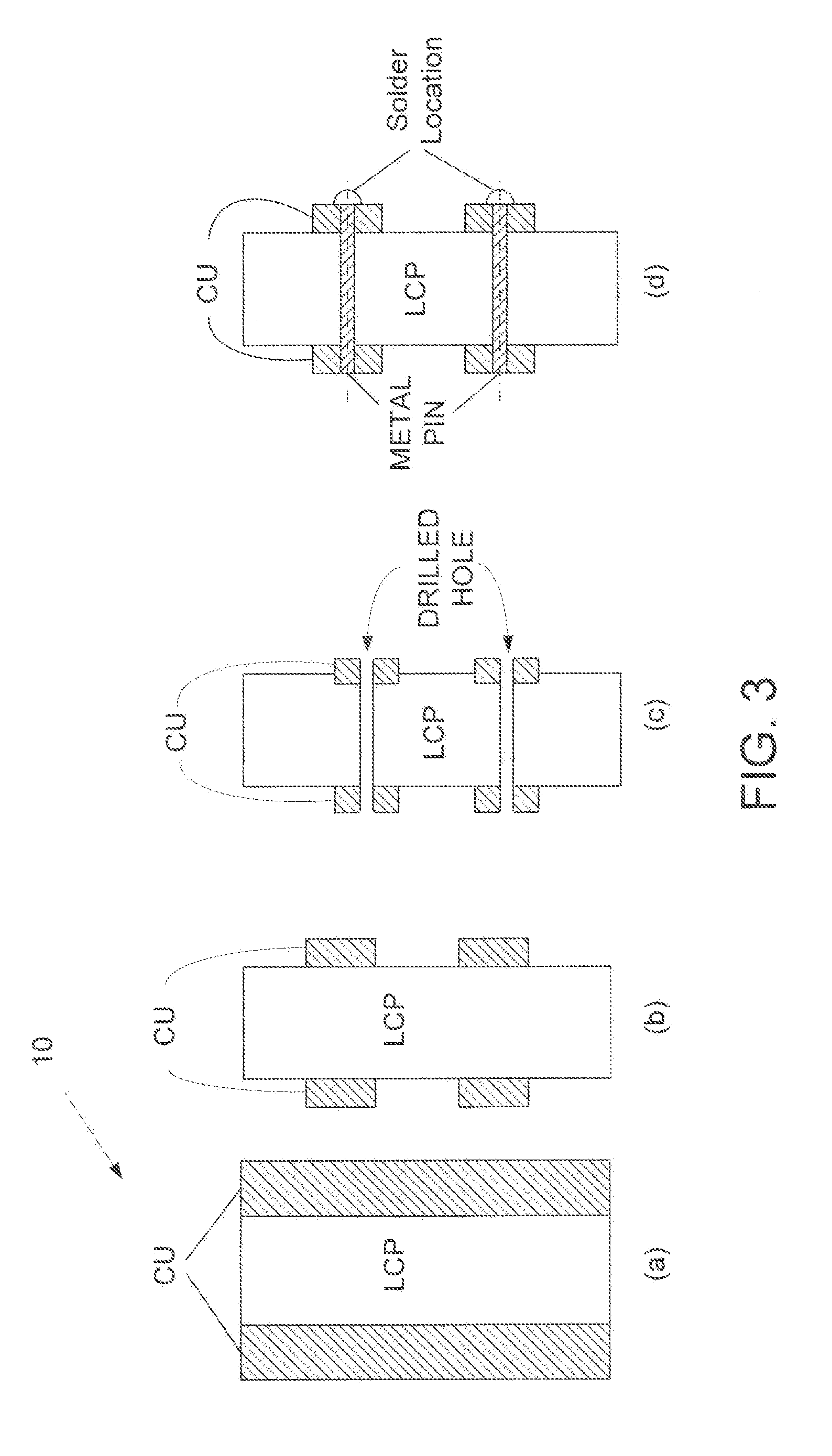Hermetic electrical ports in liquid crystal polymer packages
- Summary
- Abstract
- Description
- Claims
- Application Information
AI Technical Summary
Benefits of technology
Problems solved by technology
Method used
Image
Examples
example 1
[0064]In this example, Ticona Vectra A950 LCP resin was molded into suitable base and lid structures, including energy directors for ultrasonic welding. The perimeter of the base and lid was approximately 1″ square and height of the combined base and lid was approximately 0.5″. Several bases were filled with two-component ACE brand epoxy and the epoxy was allowed. to set. Subsequently, the epoxy filled bases and LCP lids were ultrasonically bonded using standard techniques as shown in the photograph of FIG. 15. Small sections of ULTRALAM3850 double copper clad LCP, acquired from Rogers Corporation, was cut into 1″ squares, the copper was etched from one side, and the LCP side was thermally bonded to the LCP lid. A copper pin was inserted into the package through a small hole drilled in the copper pads and the pin was soldered to the copper pad.
[0065]In FIG. 15, the sample marked EO has an epoxy filled base, but the lid is not ultrasonically bonded to the base, but instead sits on it...
example 2
[0067]In this example, ULTRALAM3850 pieces, approximately 3″ square, were cut out of larger sheets. A disk shaped puck of epoxy was placed between two of the cut out pieces. One of the ULTRALAM pieces had one electrical port incorporated in it based on the design shown in FIG. 12. The two pieces of ULTRALAM were then soldered along the perimeter using Sn60 / Pb40 solder so that the epoxy puck was completely surrounded with ULTRALAM3850. All samples were placed in a 900 C oven in a 100% relative humidity environment. The samples were removed periodically and weighed. In addition, one puck of epoxy was placed in the test chamber unpackaged in ULTRALAM so that it was directly exposed to the humid environment. This test would determine if the weight of the unprotected epoxy puck would increase much faster than the other samples.
[0068]FIG. 17 shows the results over 2550 hours. The weight of the unprotected epoxy puck increases fast and then starts to decrease. This decrease is because the ...
PUM
| Property | Measurement | Unit |
|---|---|---|
| Diameter | aaaaa | aaaaa |
| Shape | aaaaa | aaaaa |
| Area | aaaaa | aaaaa |
Abstract
Description
Claims
Application Information
 Login to View More
Login to View More - Generate Ideas
- Intellectual Property
- Life Sciences
- Materials
- Tech Scout
- Unparalleled Data Quality
- Higher Quality Content
- 60% Fewer Hallucinations
Browse by: Latest US Patents, China's latest patents, Technical Efficacy Thesaurus, Application Domain, Technology Topic, Popular Technical Reports.
© 2025 PatSnap. All rights reserved.Legal|Privacy policy|Modern Slavery Act Transparency Statement|Sitemap|About US| Contact US: help@patsnap.com



